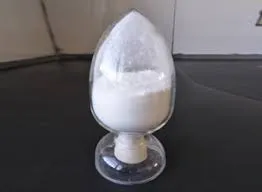The Price Dynamics of Polyacrylamide An Overview
Polyacrylamide, often abbreviated as PAM, is a synthetic polymer that has gained significant importance across various industries due to its versatile properties. Primarily known for its applications in water treatment, soil conditioning, and the paper industry, the demand for polyacrylamide has been steadily rising. With increasing demand, understanding the pricing dynamics of polyacrylamide becomes paramount for businesses and researchers alike.
Factors Influencing Polyacrylamide Prices
1. Raw Material Costs The production of polyacrylamide involves the polymerization of acrylamide, which is derived from petroleum. Therefore, fluctuations in oil prices heavily influence the cost of raw materials. When oil prices rise, so too do the production costs of polyacrylamide, leading to higher market prices.
2. Production Capacity and Technological Advances The manufacturing capacity of polyacrylamide plants and advancements in production technology play a crucial role in pricing. Increased production capacity can lead to lower prices due to economies of scale. Conversely, if production is constrained due to plant shutdowns or technological limitations, prices may escalate.
3. Global Demand and Supply Demand for polyacrylamide varies across regions. In developing economies, the demand is primarily driven by agriculture and mining industries seeking effective soil conditioning and flocculating agents for wastewater treatment. In contrast, developed regions might see a balance between industrial applications and research innovations driving demand. The interplay between global supply and demand is critical; surges in demand can prompt price increases, especially if supply chains are disrupted.
4. Market Competition The polyacrylamide market comprises various manufacturers, ranging from small players to large multinational corporations. The competitive landscape can influence pricing strategies. Companies may engage in price wars to capture market share, especially in regions with multiple suppliers. However, this can also lead to price stabilization if established firms collaborate to maintain market equilibrium.
polyacrylamide price

5. Environmental Regulations Increased regulatory focus on environmental sustainability is shaping the pricing of polyacrylamide. Stricter regulations regarding waste treatment and water usage compel manufacturers to invest in more environmentally friendly production processes. While these investments can lead to higher production costs, they may also create opportunities for premium pricing for sustainable products.
Current Trends in Polyacrylamide Pricing
As of late 2023, the price of polyacrylamide has shown fluctuating trends, largely influenced by the factors discussed. In recent months, many manufacturers have reported increasing prices due to rising raw material costs linked to global supply chain disruptions and geopolitical tensions affecting energy markets.
Moreover, the ongoing push for sustainable practices has led to the emergence of bio-based alternatives to traditional polyacrylamide, which occasionally disrupt pricing structures. These alternatives can command higher prices but offer the advantage of being more environmentally friendly, appealing to a growing consumer base focused on sustainability.
The Future of Polyacrylamide Pricing
Looking ahead, it is likely that the price of polyacrylamide will continue to reflect the broader economic landscape. Factors such as advancements in alternative materials, governmental regulations, and fluctuations in oil prices will all contribute to potential price volatility. Furthermore, as industries increasingly focus on sustainability, the market may see a bifurcation where both conventional and eco-friendly options exist, creating a diverse pricing structure.
In conclusion, polyacrylamide remains a critical material with significant market implications. Its pricing is influenced by a complex interplay of raw material costs, production dynamics, global demand, and regulatory factors. For businesses relying on polyacrylamide, staying informed about these price dynamics will be essential for strategic planning and operational efficiency. As the market continues to evolve, companies that adapt to these changes while prioritizing sustainability will likely fare the best in the competitive landscape.

